Most homeowners face the biggest challenge in growing grass due to a shady lawn. No doubt, it is really hard to grow grass on a lawn facing the shade of trees and buildings.
Are you one of them? Have you tried every solution but the end result is bare patches and dry grass? What actually the problem is?
I think you are not getting the point. The solution is here, your lawn actually needs shade-tolerant turfgrass. But how will you know the best shade tolerance grass for your lawn?
Simply, go through this article, you will find an ideal solution.
Do you want to know about shade-tolerant grass? The turfgrass that requires a minimum amount (average 4 hours) of direct sunlight is known as shade-tolerant grass. Tall fescue and fine fescue, and ryegrass are cool-season grasses. They can survive in shady areas with a minimum of 4 hours of direct sunlight. Zoysia and St, Augustine are warm-season grasses with some shade tolerance.
Sunlight acts as a stove for plants to cook their food. That’s why grass plants hate shade, as they can’t make their food. Even the roots, stem, stolons, and rhizomes lose strength in shade resulting in dry grass and bare spots. However, shade tolerant grass doesn’t mean that it will be able to survive in complete shade. These grasses may still need some amount of direct sunlight exposure to survive.
Wanna increase your knowledge about shade-tolerant grass? Keep reading!
Table of Contents
What Kind Of Grass Grows Best In Shade
Have you any idea what kind of shade-tolerant turf type is best for your lawn? If no, let’s explain shortly. Generally, turfgrass is divided into two categories:
- Tall Fescue, Fine fescue are shade-tolerant varieties of cool-season grasses.
- Zoysia, Bahia, and Centipede are shade tolerant varieties of warm-season grasses.
Cool-season grasses are well suited for the areas with extreme weather fluctuations like too cold winters and hot summers. While warm-season grasses survive well in the areas with scorching summer season like in the southern U.S. Both of these categories have a variety of turfgrass that can tolerate shade depending on the climate of your area.
Before selecting the shade-tolerant turf, keep the following points in mind.
- Consider the time in which your lawn is exposed to direct sunlight.
- Even for the shade-tolerant turf, your lawn should receive four to six hours of direct sunlight.
- You have to check what type of shade your lawn has, whether these are trees of bushes or the shade of the block in which you are living. Also, evaluate which part of the lawn is shady during the day.
6 Best Shade Tolerant Grasses
Each variety of above-mentioned turfgrasses have certain variations in shade tolerance. Some of them can thrive well in partial sunlight. While others need enough direct sunlight exposure to grow. So, it is crucial to understand well about the shade-tolerance features of these grasses.
We have explained each of the shade tolerance grasses and their ability to thrive in partial and enough sunlight. Just focus below and learn about these grasses.
Type 1 – Fescue Grass
If you live in northern areas of the U.S with extremely cold winters, fescue grass is an ideal option for cool-season shade-tolerant grass. It doesn’t mean that it can grow well in dense shade. It needs 4 to 6 hours of filtered sunlight to ensure maximum growth. However, if planted near shady trees like dogwood, applying nitrogen fertilizer and regular mowing is crucial to make the grass able to withstand the low light conditions.
Tall fescue and hard fescue are known for having shade resistance of medium density. These two fescues still need sunlight exposure for optimum growth.
Fine fescue, Creeping red fescue, and Chewing fescue are also suitable for the shady lawns of Central and the Northern U.S.
Type 2 – Annual Bluegrass
The annual Bluegrass is a weed grass having a rough stalk. It is a shade-tolerant cool-season grass. Even it can grow in wet shady areas. It needs a few hours of sun exposure to survive.
However, you may need to change your mind if you are going to plant it during the summer season. Being a cool-season grass, it can be dried in hot temperatures, hence leaving patches of bare land on your lawn.
Type 3 – Zoysia Turfgrass
Zoysia grass is a warm-season grass with medium shade tolerance. It is ideal to grow near the shades of buildings and tall trees. Its sunlight requirements are 3 to 4 hours of direct sun exposure per day. It can thrive in northern climates but can go dormant in the first frost.
Some of the Zoysia cultivars are also known for having shade tolerance. These are:
- Zeon
- Geo Zoysia
- Emerald Zoysia

These cultivars have fine blades. Plus, they are suited for shady areas like golf courses and sports grounds. However, Emerald Zoysia grows slowly and cannot tolerate long hours of shades. Besides, it can be attacked by the weeds due to slow growth.
Type 4 – Perennial Ryegrass
Perennial Ryegrass is a cool-season grass. It is best for the shady lawns in the Northern regions of the U.S. It is the cultivar of Ryegrass that grows well in low light conditions. However, 4 to 5 hours of direct sunlight are crucial for its survival.

In the hot summers when the temperature of soil reaches above 70 degrees, it can be dried off. Besides, it requires enough moisture to survive in hot weather.
Type 5 – St. Augustine Turfgrass
It is a warm-season grass. It is also well known for shade tolerance as it requires 4 to 6 hours of direct sunlight exposure for optimum growth. It has a dark green color with coarse and broad blades. Due to its distinct features, you can’t mix it with other turf types.
Certain cultivars of St. Augustine grass can thrive in 4 to 5 hours of sunlight. These are:
- Palmetto
- Seville
- Sapphire.
- Bitter blue.
- Floratum.
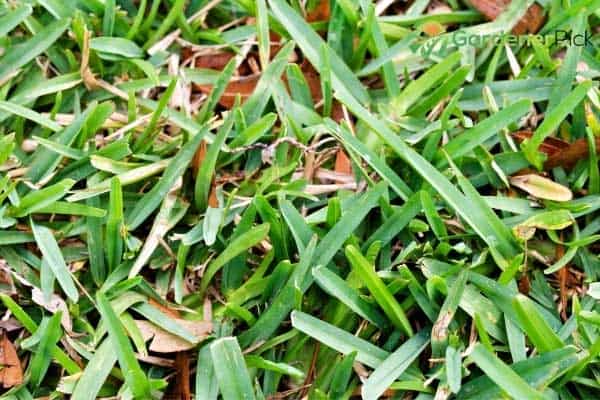
The Floratum is suitable for the Southern United States. But it requires 6 to 8 hours of direct sunlight as compared to the other cultivars of St. Augustine grass.
Type 6 – Centipede Grass and Carpet Grass
Centipede and Carpet Grass are warm-season grasses. These turf types need 6 hours of full sun. Centipede grass can become problematic in heavy shade, and phosphorus-rich soil. Similarly, it is unable to withstand drought. But it is a good option when you need moderate shade-tolerant grass.
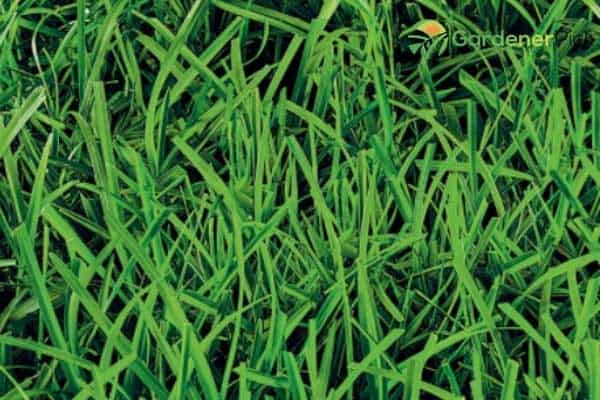
The carpet grass is both sun as well as shade lover. It not only does well in sunny areas but also tolerates shade very well. Moreover, it thrives well in the low fertile soil and has minimum maintenance requirements.
Shade Tolerant Grass In Georgia
Have you ever visited Georgia? What is your opinion about the best shade tolerance grass species in Georgia? Let’s discuss the Georgian climate first.
Georgia is a state located in the southeastern United States of North America. It has a humid subtropical climate with hot and long summers and mild winters. If you are a Georgian resident, you can well understand that the grass here will only survive if it can withstand the temperature of 35°C and more.
Zoysia is one of the most widely used shade-tolerant grass in Georgia. It can also thrive in warm and sunny weather. Plus, it can withstand drought. Its cultivar, Geo Zoysia has excellent shade tolerance as compared to its other cultivars. So, you can give it a try if you have a Georgian lawn.
Shade Tolerant Grass For Texas
The Texas state is located in the South Central part of the United States. Its climate is hot summers and mild to cold winters. Now, you have both options in selecting cool and warm-season grasses depending on the weather of that area of Texas.
Among the cool-season grasses, Tall fescue, fine fescue, Red fescue, and Ryegrass are the best options of shade-tolerant grasses in Texas. All of these grasses need only 4 hours of sunlight to survive.
For warm areas of Texas, Zoysia and St. Augustine are perfect for the lawns of Texas to thrive in the heat. These can tolerate shade as well.
Shade Tolerant Grass For Florida
The location of Florida State is in the southeastern region of the United States. The north and central part of this state has a humid subtropical climate, while south Florida has a tropical climate. The summer temperature here can reach as high as 65°F while the winter temperature can range between 40°F to 45°F.
The below mentioned two cultivars of St. Augustine grass are best for the shades in Florida:
Seville: The sunlight requirements of Seville is only 2 hours per day. Hence it is an ideal solution for the shady lawns of Florida. But it can develop thatch after some years if planted under direct sunlight. However, overall it is a good option for shades.
Classic St. Augustine: If you need sun and shade mix variety for your lawn, St. Augustine is an ideal option. It has good disease and insect resistance, also, its dark green color and broader blades will add value to your lawn.
You can also try Zoysia Palisade, it has a coarse texture and low water requirements.
How To Grow Grass In Heavy Shade
Most of the homeowners keep on asking about grass that can grow in heavy shade. So, all the garden lovers keep in mind that there is not a single species of grass that can thrive in complete shady conditions. Every plant requires sunlight for photosynthesis.
The turfgrass needs water nutrients and sunlight to grow vigorously. Due to insufficient light, leaves will not photosynthesize properly, and the weak growth may result in a problematic lawn.
However, for your shady lawn, we have a few tips that may help you in this aspect. So, focus below to learn more:
- Make sure to use a dense shade mix of grass seeds for your lawn.
- To cope with the low light conditions, overseed your lawn each fall.
- The shady lawn can retain moisture and is prone to fungus. So, solve this issue if it happens, as soon as possible. If there is a risk of fungus, bag the clippings.
- Manage to plant the shade-tolerant turf during the summer season.
- If you want to save the grass, avoid excessive foot traffic in the shady areas.
- If you have to use the grass for foot traffic, insert stones to avoid any damage to the grass.
- Avoid mowing too short, as it will reduce the surface area of grass for maximum absorption of sunlight.
- Prune the trees regularly to allow the sunlight to cover the maximum area.
- You can also use a blend of sun and shade mix grass to maintain a balance.
What Kind Of Grass Grows Under Trees
Are you worried about bald patches of grass under the trees? Do you want to know which turf type is best to grow under the trees? If yes, keep on going!
Fine Fescue is one of the ideal turf types to grow under the trees. If you are planning to grow this one, wait for early spring or fall for optimum results. Remember that the grass competes for water and nutrients under the shade. Ensure to water the grass deeply. For proper distribution of water, you can use an irrigation system. But too much water retention in the winter season may result in fungus.
The most important thing is pruning the trees to allow more light to reach the ground. Besides, select the type of turf that requires 4 hours of sunlight to grow and has thinner turf. The reason for the selection of thinner turf is, it can survive while thicker one can die due to more nutritional requirements.
Related Articles: Tall Fescue Vs Bluegrass [Table of Differences + Selection Guide]
Final Verdict
Finally, we concluded that different shade tolerant varieties of turf have different sunlight requirements based on the location of your lawn. Even the best shade tolerant turf types need some extent of direct sunlight to photosynthesize. Installation of grass under trees needs special care.
These grasses compete for nutrients and water, hence you can expect thin grass beds in shady areas. Avoiding foot traffic, insert stones to walk on if necessary. Reducing the stress on your already suffering grass can save it from complete drying.
Always select the shade-tolerant turf type well suited for your location. A mix of sun and shade grass can balance the lawn in partial sunlight.

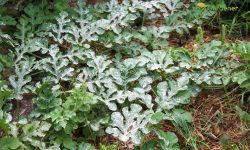
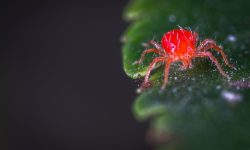
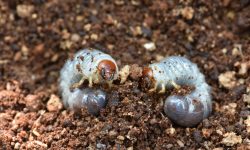
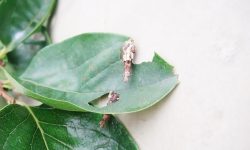
![How Long Does Sevin Dust Last? [Minimum Time For Working Fast]](https://gardenerpick.com/wp-content/uploads/2022/01/how-long-does-sevin-dust-last-250x150.jpg)
![What Do Inchworms Turn Into? [Life Cycle]](https://gardenerpick.com/wp-content/uploads/2022/07/What-Do-Inchworms-Turn-Into-250x150.jpg)